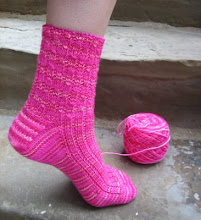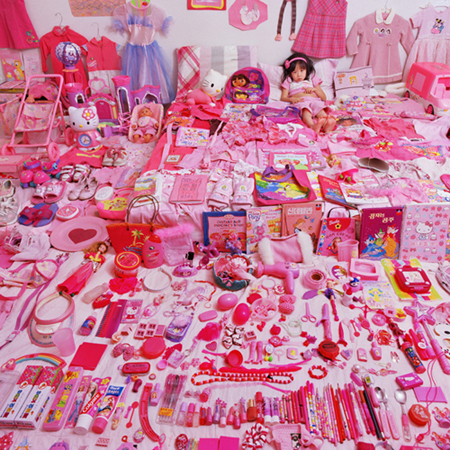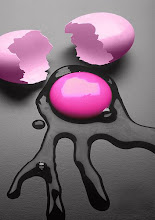Wednesday, April 29, 2009
Attendance for 4/29
1. interview questions
2. environmental proposal
3. summary for reading #5
People who came:
- Calvin
- Steven
- Chiara
- Angel
Interview Questions
2. What is your profession/major?
3. When you are watching a film or a play, what elements are most important to you? (storyline, visual, cathartic..) Why?
4. Does art play a big role in your life? How?
5. Do you like to appreciate art or make art? Why?
6. What type of struggle do you think makes a protagonist interesting? Why?
7. Would you rather be blind or deaf? Why?
8. If you were to make a film, would you be the set designer or the director? Why?
9. If you were to make a film/play, what would it be about? Why?
10. What film/play has most influenced your life and/or changed your perspective on the world that surrounds us? Why?
Environmental Design Proposal
- what: snowflakes
- where: forest
- when: may 26 or may 28
- why: theater 10
The Pink Pansiez will go to the forest pathway in between Oakes and the Music Hall on the 26th or the 28th of May. We will make paper snowflakes and hang them on strings on the trees. We are changing the space of Spring into the space of Winter, versing the changing of the Seasons. We want to do this in order to change things that are seemingly impossible to change to communicate the ideology that individuals can change affect change in systems that are larger than themselves. In front of the space that we decorated with snowflakes, we will put a door, thus creating a space within a space. We will all be dressed in white and standing amongst the falling snowflakes behind the door. Steven will be dressed head to toe in black, in front of the door; an outcast.
READING #5: Can Theater and Media Speak the Same Language

- theater has been fascinated with technology
- yet until the 20th century theater technology was primarily mechanical. The technician's task was to make things move and sometimes to make actor's defy the laws of gravity.
- there has been new components in the scenographer's palette: projections, film, video.
- the placement of technology and imagery on stage is tantamount to carrying on a conversation with two languages: communication is still possible, but content is overwhelmed by form.
- theater is the only art form to use that which is signified as the signifier of that object.
- space or volume, implies time.
- the projection is in the present, but the image is from the past; the image was photographed, filmed or videoed prior to presentation
- time has transformed the subject while preserving the object
- on stage that combines live images observed through normal visual processes and photographic images observed through normal visual processes and photographic images in which an eye observes mechanically reproduced images, the two systems inevitably clash.
- No image has anything to do with the wall in which they are hung
- Theater is not unlike a painting: within a larger envelope, a larger frame. we can view the world on a different scale that obeys different rules and yet sit in our seat relatively undisturbed by this cosmic rupture.
- what makes the movies more attractive than theater or opera is: ability to present us with an infinite world. we can defy the laws of time and space as movies take us in a blink of an eye to worlds past and future, far and near.
- Even if it is a large projection, we see it in relation to the living actors, scenic units, and even the wall of the theater. corporal reality, imagistic reality, and symbolic reality are brought into proximity and often into direct comflict.
- onstage we see objects in movement against the generally static ground of the stage or scene. But in cinema, nothing is stable.
- A stage set, is permanent and unchanging.
- The very idea that one image, the projection is created by light, and the other the stage set, is created by objects that are made visible by their ability to reflect light, creates two preceptual orders, two kinds of reality.
- too often theater creators are more concerned with the technology and the momentary theatricality of the filmic or digital image than with understanding and exploring the way in which two vocabulary systems intersect.
Tuesday, April 28, 2009
MEETING- WED 4/29
Just to remind you we are meeting tommorow night at 8pm @SE Library
We will be discussing the Interview Project and the Environmental Design.
So PLEASE COMEEE!!
Thanks.
Wednesday, April 22, 2009
READING #4: World on Stage
- The power of the sign is not necessarily exhausted either by its illusionary or its referential character. Theater is really a language whose words consist to an unusual degree of things that are what they seem to be.
- Peter Handke states that in the theater light brightness is pretending to be other brightness, a chair is a chair pretending to be another chair.
- Bluntly speaking, in theater there is always a possibility that an act an act of sexual congress between two so-called signs will produce a real pregnancy.
- Art exists that one may recover the sensation of life; it exists to make one feel things, to make the stone stony. The purpose of art is to impart the sensation of things as they are perceived and not as they are nkown. Art is a way of experiencing the artfulness of an object, the object is not important.
pages 9&10:
- if the dog acts like itself, or it "isn't submitting", and it contributes to further comedy.
- in the theater, there is no ontological difference between the image and the object.
- Moliere playing himself on stage: is Moliere plus a Moliere text, or the Moliere minus the freedom to be himself.
- we percieve the dog on the stage imaginatively while we percieve the dog in the zoo indicatively.
- Theater brings us into the phenomenal contact with what exists or with what is possible to do, theatrically with what exists.
- theater ingests the world of objects and signs only to bring images to life.
- Goodman suggests that something may be a work of art on one occasion and not a work of art on another. It is not a question of what is art, but what is art.
pages 11&12:
Wednesday, April 15, 2009
READING #3 Behind the Screen Door

Page 1
- One of the most Iconic images of American popular culture of the 90's came from television. Sitcoms like Seinfield and I love Lucy were some of the many hit comedies that captured audiences attention.
- In the world of Sitcoms, which is true in drama, is the concept of the "door". The door serves as a barrier against the chaos that lurks just beyond. A border in which the action ensues back and forth until the door is closed again and harmony and balance are restored.
-Stages, movies, and TV shows depict rooms with doors in which characters come and go in order to push the dramatic action. The door marks a beginning and an end, similar to the language of computers is a binary that is a digital doorway: open or closed.
-The door sets up a rhythm- it is a visual equivalent to a metronome- that regulates the action but sets up the expectations
-The door is the most profound technological and scenographic development of theater. It is hard to conceive theater without it. The introduction of the door delineated two seperate spaces, the world seen and unseen.
Page 2
- The door delineates two spaces, the known and the unknown.
- Door opening on stage manifests infinite possibilities.
- Door closing on stage represents extinguished possibilities and death.
- Says theater is similar to peek-a-boo, using a curtain to begin and end wonderment for us.
- For every introduction there is a reaction, i.e. “if a gun appears in the first act, it must go off by the last… if a door is closed in the first act, it must be opened by the last, or vice versa.”(55).
- First known use of a door on the stage was around 460 BC, Aeschylus’ The Oresteia.
- None of the known plays before it required a door.
- No door leads to less structure, possibly just an altar.
- In The Persians, actors enter on a long path rather than a door.
Page 3:
- Audience cannot experience surprise (p. 56) because entrances to Greek theater unfolded through time
- Exits took on the attribute of musical chords fading out
- Function of doors in Greek theater:
- “altered rhythm of the tragedy”
- allows "cinematic rhythm"
- allows time elipses
- creates drama
- violence rare for Greek theater because they didn't think murder could be accurately depicted unless with a door
- allowed audience to image alternate worlds
- allowed space is transformed
Page 4:
The door is the gateway between worlds.
It is where actors become the character. On stage there used to be two doors on either side of the stage to symbolize a change or a transition between the actual person back stage, and the character being portrayed.
Between doorways we have the neutral zone. The area in which there is nothing, you are changing. You are not the character, and you are not you. You are nothing.
Doorways are the way to connect two different places without being either one. A door connects a kitchen and a living room, but the doorway is not either the kitchen or the living room. It is the doorway, its own entity of transition. in a sence, nothing at all. Our perception only gives it meaning.
page 5:
- Doors are symbols of salvation: New Testament, John
- Doorways are often a place of sacrifice, or a place to deposit items for safekeeping
- Almost in all cases, the passageway between the world of the living and the dead is marked by a door
- Egyptian underworld has 12 doors
- Valhalla has 540 doors
- The door can establish a comic rhythm or a tragic one
- Keaton devised a house of doors
- made so to protect his father and the woman he loves
- symbolizes Keaton's world to protect the good and destroy evil
Page 6:
-20th century= intense shift when artists and poets began to question the absolute authority of external reality.
-author Chekov= one main culprit as he tried to break down the distinction between spaces (the visible and the invisible).
-author brings to light Beckett's Waiting for Godot, stating that ultimately Estragon and Vladimir (the two protagonists) cannot leave, because there is no door!
- author writes that we are living in a time of uncertainty and that is responsible for a theater with no doors.
- all the same, the author is clear to write that "without doors, there can be no grand exit, and thus there is no finality."
-difference between theater and television is brought to light: the image on a TV "is isolated in a box within a room within a house where it becomes one object among many.
Monday, April 13, 2009
Wednesday 4/15
Wednesday, April 8, 2009
Meeting time
We expect to see you all there, or at least hear from you!
This is a group effort, please participate.
People who showed up:
Meeting #1: Monday 4/6
- Ross
- Chiara
- Kendra
- Calvin
- Angel
- Angela
- Steven
Meeting #2: Wednesday 4/8
- Al
- Kendra
- Chiara
- Angel
Meeting #4: Wednesday 4/22
- Chiara
- Angel
- Steven
READING #2 Directors and Designers

- Designer and director have to merge to become a successful team in order to produce exciting work
- There are two different views:
1. Directors think there was a good 'shorthand'
2. Designers are scared to voice their opinion
- Designer feels like a wife; must be supportive at all times
-"Designer speak" is created:
"Do YOU think it would be a good idea if.."
- Phillip Prowse- designer & director
- He was revolutionary within the European theater
- Was very successful because he was able to elaborate on his own viewpoint; never had to compromise his ideas
- He was success in creating a team of interpreters who understood his visual vocabulary
- Josef Svoboda- Czech architect and scenographer
- He believed in the mutual collaboration between the author and the director
- His most noteworthy productions were done by himself.
- Robert Edmund Jones:
- " the best thing that could happen to our theater...would be for playwrights and actors and directors to be handed a bare stage on which no scenery would be placed..."
- the author brings to light the evolution of the two distinctive pathways- director and designer
- Designers or visual theater artists could only work though the directors
- The designers cannot choose the play they really want to do and then hire the director they would like to work with
- Some designers are in tuned to the directors, they could interpret the directors vision on stage without prolonged discussion.
- The theater hierarchy replicates the architectural structures in which they operate
- Producers and management offices are on upper floors; theater artisans are located in the basement
- As the playhouse has developed in the twentieth century, the degrees of separation have intensified
- To end once and for all the master servant relationship, euphemisim for collaboration and to develop real working practices.
- Even the greatest partnerships have their flaws; perfection in unattainable
- Designers become architects of the space and the space becomes a major player in the production
- Yet designers must also be architects of the imagination
- All that matters is that a harmonious creative language is invented for the production
- Latteral collaboration, rather than vertical management structure is created
- Ultimately author suggests that we "move away from the labels, stereotypes, and definitions and focus on what we can do individually on the ground"
The Manifesto

TA 10: Intro to Design
Alan Tollefson
April 6, 2009
The Pink Pansies Manifesto
Members: Kendra Avalos, Al Asuega, Arturo Araujo, Calvin Luu, Chiara Borghetti, Angela Dignadice, Angel Chung, Erika Martinez, Steven Cambell, Lauren Thomas, Ross Nichols, Wendy Salazar
We are The Pink Pansies and we will not allow ourselves to be hindered by the limits of social boundaries. Not even the connotation of our name will stop us! We are not weak but strong. United but not confined. We have seen a future wherein the narrow minded rule; let us say that this is a bleak future devoid of our complexity and full potential. Through our thought-provoking and honest works we wish to instill within our spectators an awareness of this “prison”. We have visited it yet escaped due to our refusal to be plagued by the status quo. With narrative as our sword and theatre as our torch we will ignite the minds of our audience. Our hope is that our work will burn in their minds forever.











